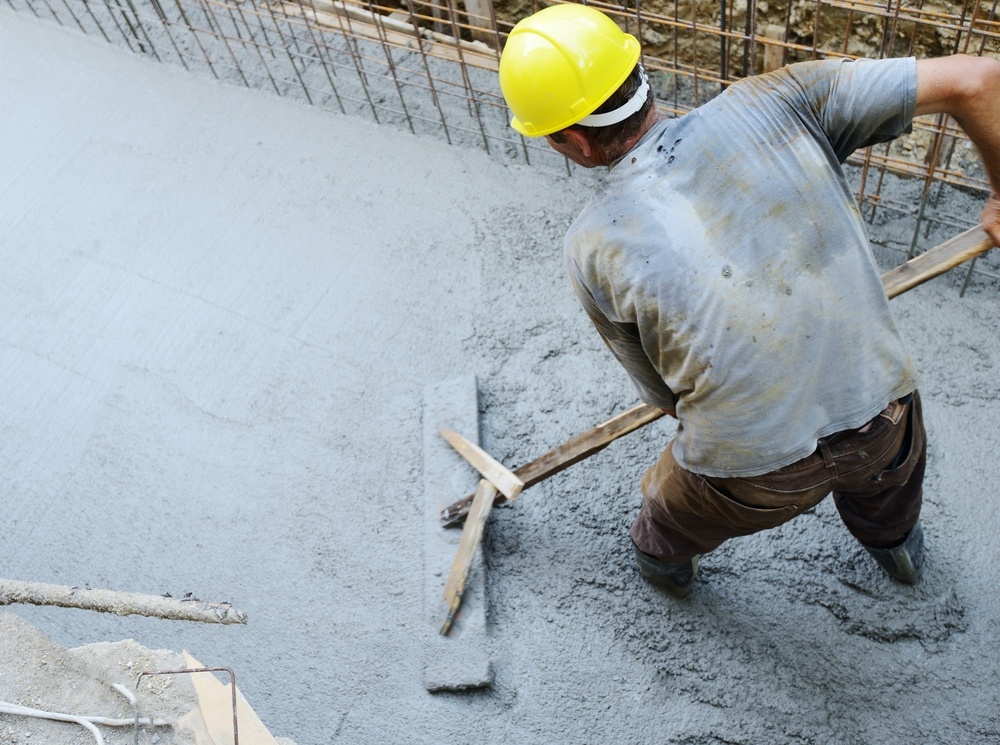The Power of Metadata in Document Scanning and Archiving
Table of contents
In today's rapidly evolving digital landscape, the ability to swiftly access, retrieve, and organize documents is more than a convenience—it's a competitive advantage. This is especially true for sectors like architecture and construction, where the sheer volume of plans, blueprints, and project documents can be overwhelming. Document scanning and archiving have emerged as fundamental practices in these industries, serving as the backbone for efficient project management, collaboration, and regulatory compliance.
However, as we delve deeper into the digital age, traditional methods of document scanning are proving to be insufficient. Enter metadata scanning—a transformative approach that redefines what it means to be organized. By embedding detailed information directly into the fabric of digital documents, metadata scanning enhances accessibility, streamlines search and retrieval processes, and opens up new possibilities for document management. This innovative technique not only saves time but also significantly reduces the risk of errors and omissions, ensuring that critical information is always at your fingertips.
Understanding Metadata in the Context of Document Scanning
In the digital realm, metadata is often described as "data about data." This encompasses a wide range of information, from basic document properties like file name, size, and creation date, to more detailed content-specific attributes such as author, project number, and relevant dates. For architectural firms and construction companies, where projects generate a vast array of documents, metadata offers a powerful lens through which to view, organize, and retrieve information.
Traditional vs. Metadata Scanning
Traditional Document Scanning merely converts physical documents into digital format. It's a straightforward process that creates a digital copy, often in PDF or TIFF format, but without any additional context or searchable attributes beyond the basic file properties. This method is akin to moving a paper pile from your desk to your computer—while it saves physical space, it does little to enhance accessibility or searchability.
Metadata Scanning, on the other hand, infuses these digital documents with a rich layer of descriptive information. This process involves tagging documents with relevant metadata that describe and categorize the content in a meaningful way. For instance, a scanned blueprint might include metadata tags for the project name, location, architect, revision date, and more. This not only makes the document easier to find in a digital archive but also enables sophisticated search capabilities that can filter through thousands of files in seconds.
The added value of metadata is immense. It transforms a static digital archive into a dynamic, interactive library. Documents are no longer just images or files but become interconnected pieces of a larger puzzle, easily navigated and understood.
The Role of Metadata in Enhancing Document Management
In the intricate world of architecture and construction, the management of documents is a critical task that can significantly affect the success of a project. Metadata plays a pivotal role in revolutionizing this aspect, bringing about efficiency and precision that were previously unattainable.
Improving Searchability and Retrieval
The introduction of metadata into document management systems has been a game-changer for searchability and retrieval. Consider an architectural firm working on multiple projects simultaneously, each with hundreds of documents. Without metadata, finding a specific document could be like searching for a needle in a haystack. However, with metadata scanning, each document is tagged with relevant information, such as project name, document type (e.g., blueprint, contract, invoice), creation date, revision number, and more.
This granularity allows for powerful search functionalities. For example, a project manager looking for the latest revision of a specific blueprint can easily filter documents by project name, document type, and revision number, drastically reducing the search time from hours to mere seconds.
Simplifying Categorization and Organization
Metadata also simplifies the categorization and organization of documents. By using metadata tagging and indexing, documents can be automatically sorted into appropriate folders and subfolders based on predefined criteria. This not only makes the digital archive more navigable but also ensures consistency in how documents are organized across projects.
For instance, all documents related to a particular construction project can be automatically organized by stage (e.g., planning, construction, post-construction), document type, and other relevant criteria. This level of organization is invaluable, especially when dealing with large volumes of documents, ensuring that every team member can find what they need quickly and efficiently.
Case Studies: Success Stories in Architecture and Construction
Adopting metadata scanning solutions has proven to be a strategic move for many in the architecture and construction industries. These case studies demonstrate the tangible benefits that firms have experienced by integrating advanced document management technologies.
Case Study 1: Streamlining Project Management with Metadata
An architectural firm specializing in commercial buildings faced challenges managing the extensive documentation each project generated. By implementing a metadata scanning solution, the firm was able to tag documents with project-specific information, including client names, project stages, and revision histories. This approach transformed their document management system, enabling quick retrieval of documents and efficient project tracking. As a result, the firm reported a 30% reduction in time spent searching for documents and a significant improvement in team collaboration and project delivery times.
Case Study 2: Cost Savings Through Efficient Document Archiving
A construction company dealing with large-scale infrastructure projects was struggling with the costs associated with physical document storage, not to mention the inefficiency of retrieving archived documents. After adopting a metadata scanning system, the company could digitize and tag all physical documents, allowing for easy search and retrieval. The shift to a digital archive resulted in an 80% reduction in storage costs and a dramatic decrease in document retrieval times, from hours or days to just minutes.
Case Study 3: Enhanced Compliance and Error Reduction
For a firm engaged in high-profile public sector projects, compliance with regulatory documentation requirements was a major concern. Metadata scanning enabled the firm to tag documents with compliance-related metadata, facilitating easy audits and ensuring that no critical document was misplaced or overlooked. This led to a notable reduction in compliance-related errors and fines, alongside enhanced operational efficiency.
Implementing Metadata Scanning in Your Firm
The transition to a metadata scanning solution can be a transformative process for any architectural firm or construction company. Here’s how to ensure a smooth implementation:
Step 1: Assess Your Needs and Goals
Begin by evaluating your current document management processes to identify pain points and areas for improvement. Determine what you hope to achieve with metadata scanning—whether it’s faster document retrieval, better organization, cost savings on storage, or compliance management.
Step 2: Choose the Right Technology Partner
Selecting a technology partner is critical. Look for providers with proven experience in the architecture and construction sectors. They should offer scalable solutions that can grow with your firm and provide robust support for the integration phase and beyond.
Step 3: Train Your Staff
Successful implementation requires buy-in from all users. Invest in comprehensive training for your staff to ensure they are comfortable with the new system. Highlight the benefits of metadata scanning, such as reduced time spent searching for documents and improved project workflows.
Step 4: Integrate With Existing Systems
To maximize the benefits of metadata scanning, integrate the new system with your existing digital tools and workflows. This might include project management software, digital archives, and other platforms your firm uses. Seamless integration ensures that metadata scanning enhances rather than disrupts your current operations.
Step 5: Continuous Review and Improvement
After implementation, continuously review the system’s performance and user feedback. Adjust and improve your metadata tagging strategies, document categorization, and search functionalities to meet evolving project needs and industry standards.
Best Practices for Metadata Management
Effective metadata management is key to unlocking the full potential of your document scanning solutions. Here are some best practices to ensure your metadata strategy is up to par:
Create Effective Metadata Tags
- Be Consistent: Establish a standardized set of metadata tags and apply them consistently across all documents. This includes defining a clear structure for project names, document types, revision numbers, and other relevant information.
- Be Detailed: Use detailed and descriptive tags that accurately reflect the content and context of the document. This makes it easier to search and categorize documents.
- Involve the Team: Engage with team members from different departments to understand their document retrieval needs and incorporate their insights into your metadata tagging strategy.
Ensure Metadata Accuracy
- Regular Audits: Conduct regular audits of your metadata to ensure accuracy and completeness. This can involve spot-checking documents or using software tools designed to identify metadata inconsistencies.
- Update as Needed: Be prepared to update metadata tags as projects evolve. This includes adding new tags for additional document types or updating project-related metadata as needed.
Maintain Data Privacy and Security
- Access Controls: Implement strict access controls to ensure that sensitive documents and metadata are only accessible to authorized personnel. This includes setting permissions based on user roles and project involvement.
- Compliance and Standards: Ensure that your metadata management practices comply with industry standards and privacy regulations. This might involve anonymizing certain types of metadata or securing metadata against unauthorized access.
Ongoing Management and Review
- Feedback Loop: Create a feedback loop with users to continuously improve metadata tagging and management practices. User feedback can highlight areas for improvement and new tagging requirements.
- Adapt to Changing Needs: Be flexible and ready to adapt your metadata strategy to meet changing project needs and industry standards. This could involve adopting new technologies or revising metadata structures to improve efficiency.
The Future of Document Management: Trends and Innovations
The future of document management in architecture and construction is poised for exciting developments, driven by advances in technology and evolving industry needs. Here’s what we can anticipate:
AI and Machine Learning Enhancements
Artificial Intelligence (AI) and Machine Learning (ML) are set to play pivotal roles in the next evolution of document management systems. These technologies can automate the creation and updating of metadata, making the process more efficient and reducing the potential for human error. For example, AI could analyze the content of a document and automatically tag it with relevant metadata based on its context and content.
Increased Integration with Project Management Tools
The integration of document management systems with project management tools is expected to deepen, providing a more seamless experience. This integration will likely enable real-time updates to documents and metadata directly from project management platforms, enhancing collaboration and accessibility.
Enhanced Security with Blockchain
Blockchain technology could offer new ways to secure document management systems. By creating immutable records of document creation, revisions, and access, blockchain can provide a transparent and secure audit trail. This is particularly relevant for projects requiring high levels of security and accountability.
Predictive Analytics for Document Management
Predictive analytics, powered by AI and big data, could offer insights into document management trends, helping firms anticipate and prepare for their future needs. For instance, predictive models could suggest when to archive inactive projects or identify patterns in document access to improve the organization of digital archives.
Personalized Access and Retrieval
Future document management systems might offer personalized search and retrieval experiences based on user roles and past behavior. AI could tailor the metadata tagging and search functionalities to individual preferences and needs, making document retrieval faster and more intuitive.
Conclusion
The journey through the evolution of document management in the architecture and construction sectors highlights the transformative power of metadata scanning. This innovative approach not only streamlines the searchability, retrieval, and organization of documents but also lays the groundwork for future advancements in the field. Through real-world case studies, we've seen the tangible benefits of metadata scanning, from efficiency gains and cost savings to improved project management outcomes.
As we look ahead, the integration of AI, machine learning, blockchain, and predictive analytics promises to further revolutionize document management. These technologies offer the potential for automated metadata tagging, enhanced security, and personalized document management experiences, ensuring that firms can stay ahead of the curve in a competitive landscape.
The shift to metadata scanning is not merely a technological upgrade but a strategic investment in the future of your firm. It represents a commitment to operational excellence, enhanced collaboration, and a proactive stance towards emerging industry trends.
Ready to transform your document management strategy and reap the benefits of metadata scanning? DocCapture is here to guide you through this digital transformation. Whether you're looking to improve project efficiency, enhance document security, or simply organize your digital archives, our solutions are tailored to meet the unique needs of architectural firms and construction companies.
Don't let document management challenges slow down your projects. Fill out our "get a quote" form today to explore how our metadata scanning services can streamline your operations and set your firm up for future success. Visit our website and take the first step towards operational excellence.
Share this
You May Also Like
These Related Stories

Reduce Data Entry Bottlenecks in Manufacturing with Document Scanning

Transforming Public Records Management for Government Efficiency

